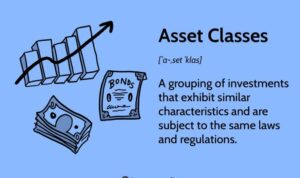Yo, listen up! Saving for retirement at any age is the key to securing your future and living your best life. Whether you’re just starting out or nearing retirement, this topic is all about helping you navigate the world of finances like a boss. Get ready for some real talk about money management and securing that bag for your golden years.
Why Saving for Retirement is Important
Saving for retirement is crucial at any age because it allows individuals to secure their financial future and maintain their standard of living once they stop working. By setting aside money regularly, individuals can build a nest egg that will provide them with financial stability during their retirement years.
Benefits of Starting Early vs. Starting Later
- Starting early allows individuals to take advantage of compound interest, which helps their savings grow exponentially over time.
- Early savers have a longer time horizon to recover from market downturns and adjust their investment strategies, reducing the impact of potential losses.
- Delaying retirement savings can result in having to contribute a larger portion of income later on, potentially leading to financial strain and limited options during retirement.
Impact of Inflation on Retirement Savings
Inflation erodes the purchasing power of money over time, meaning that the same amount of money will buy fewer goods and services in the future. This can have a significant impact on retirement savings, as the cost of living continues to rise. Therefore, it is essential for individuals to consider inflation when planning for retirement and ensure that their savings are able to keep up with the increasing expenses.
Strategies for Saving for Retirement
Saving for retirement is crucial no matter what your age is. Here are some strategies to help you reach your retirement savings goals and secure your financial future.
Calculating Retirement Savings Goals
- Start by estimating your desired annual retirement income.
- Consider factors like inflation, healthcare costs, and lifestyle choices.
- Use a retirement calculator to determine the total amount you need to save.
- Adjust your savings goals periodically based on changes in your life circumstances.
Cutting Expenses to Save More
- Create a budget and track your expenses to identify areas where you can cut back.
- Avoid unnecessary purchases and focus on saving instead.
- Consider downsizing your home or finding more affordable alternatives.
- Find ways to increase your income through side hustles or part-time jobs.
Advantages and Disadvantages of Retirement Savings Accounts
- 401(k): Employer-sponsored retirement account with tax advantages, but limited investment options.
- IRA (Traditional or Roth): Individual retirement account with tax benefits, but contribution limits and restrictions apply.
- Health Savings Account (HSA): Triple tax-advantaged account for medical expenses in retirement, but requires a high-deductible health plan.
- Brokerage Account: Offers flexibility in investment choices, but lacks tax advantages of retirement accounts.
Investing for Retirement

When it comes to saving for retirement, investing can play a crucial role in helping your money grow over time. Understanding concepts like compound interest and exploring different investment options can help you make informed decisions for your future financial security.
Compound Interest and Retirement Savings
Compound interest is the interest calculated on the initial principal and also on the accumulated interest from previous periods. This means that your money can grow exponentially over time, especially when invested for the long term. The earlier you start investing, the more time your money has to compound, increasing your retirement savings significantly.
Investment Options for Retirement Savings
- 401(k) or employer-sponsored retirement plans
- Individual Retirement Accounts (IRAs)
- Stocks and mutual funds
- Bonds and Treasury securities
- Real estate investments
Each investment option comes with its own risk and return potential, so it’s essential to diversify your portfolio to manage risk effectively.
Risk Factors Associated with Different Investments
- Stocks: Higher potential returns but also higher volatility
- Bonds: Lower risk compared to stocks but lower returns
- Real Estate: Potential for appreciation but subject to market fluctuations
- 401(k) Plans: Employer match can be beneficial, but limited investment choices
It’s important to assess your risk tolerance and investment goals when choosing the right mix of investments for your retirement portfolio.
Adjusting Retirement Savings Goals at Different Stages of Life
As we journey through life, our financial needs and priorities evolve, impacting our retirement savings goals. It’s crucial to reassess and adjust our retirement plans to ensure a secure future. Let’s explore how retirement savings goals change based on age and circumstances, and tips for catching up on savings if starting late.
Early Career: Setting a Strong Foundation
During the early stages of your career, focus on establishing a solid financial foundation. Aim to save at least 10-15% of your income for retirement. Take advantage of employer-sponsored retirement plans and consider higher-risk investments for potentially higher returns.
Mid-Career: Increasing Savings and Diversifying Investments
In your mid-career phase, ramp up your savings efforts. Aim to save 15-25% of your income for retirement. Diversify your investment portfolio to manage risk and maximize growth potential. Consider consulting with a financial advisor to fine-tune your retirement strategy.
Approaching Retirement: Protecting Your Nest Egg
As retirement nears, shift your focus towards protecting your accumulated savings. Consider reallocating investments to more conservative options to safeguard your nest egg from market volatility. Evaluate your retirement expenses and adjust your savings plan accordingly to ensure a comfortable retirement.
Catching Up on Retirement Savings
If you’re behind on your retirement savings, don’t panic. Start by cutting unnecessary expenses and increasing your savings rate. Take advantage of catch-up contributions allowed for those aged 50 and above in retirement accounts. Consider delaying retirement or exploring part-time work to boost your savings.






